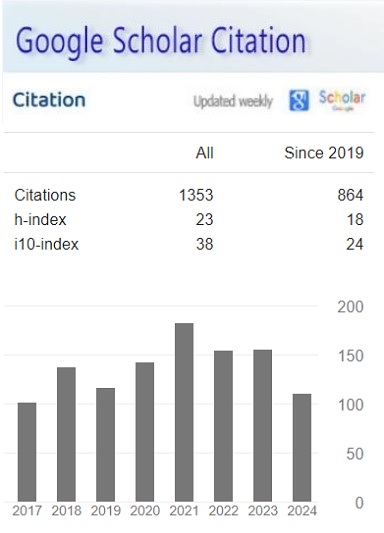Influence of Cloud Computing in Business: Are They Robust?
Keywords:
Abstract
While the jargons used to describe this remarkable shift in computing may scare away people, cloud computing is not really as complicated as we are made to believe. For instance, you may be deploying a service that needs to interoperate with CRM or e-commerce application services, which necessitates the development of a custom technology stack in order to deploy into the cloud. The truth is, not all of these capabilities really exist in cloud computing at the moment, nor are all that really exists fully automated; a good number of these functions can be provided. While it is true cloud computing has its own challenges such as security, privacy, and regulatory challenges that businesses ought to sort first before fully migrating to the cloud, there are numerous benefits that cloud technologies do provide today that can be utilized in the deployment of many enterprise applications. While we are saying businesses should think through the challenges posed by cloud computing, vendors and other cloud providers also need to strengthen cloud capabilities to address these challenges. Also, cloud vendors should provide virtual private cloud functionality that will hopefully compensate for the current shortcomings as they work to address them in a more strategic and long-term way. In cloud computing, technology such as storage, CPU, networking equipment, is not the service, but rather the building blocks. Conclusion Cloud computing has proven to be the most promising technological breakthrough in recent years. Of course, this technology is not a new concept in the market, and with proper planning and deployment, it can increase operational efficiency.
References
Demystifying Clouds: Exploring Cloud and Service Grid Architectures, by Thomas B Winans and John Seely Brown, Deloitte, 2009
Service Grids: The Missing Link in Web Services, by John Hagel III and John Seely Brown, Working Paper Series, 2002
Web Services 2.0, by Thomas B Winans and John Seely Brown, Deloitte, 2008
Attaran, Mohsen (2017) "Cloud Computing Technology: Leveraging the Power of the Internet to Improve Business Performance," Journal of International Technology and Information Management: Vol. 26: Iss. 1, Article 6. Available at: https://scholarworks.lib.csusb.edu/jitim/vol26/iss1/6 DOI: https://doi.org/10.58729/1941-6679.1283
Xuan Xu. (, 2012). From cloud computing to cloud manufacturing. Robotics and Computer Integrated Manufacturing, 28, 75-85. DOI: https://doi.org/10.1016/j.rcim.2011.07.002
Sean Marston, Zhi Li, Subhajyoti.B, Juheng.Z. & Anand.G. (2011). Cloud computing–the business prospective. Decision Support Systems 51, 176-189. DOI: https://doi.org/10.1016/j.dss.2010.12.006
Angela Lin, Nan-Chou Chen (2012). Cloud computing as an innovation: perception, attitude, and adoption. International Journal of Information Management, Retrieved From http://dx.doi.org/10.1016/j.ijinfomgt.2012.04.001 DOI: https://doi.org/10.1016/j.ijinfomgt.2012.04.001
Folinas, D., Manijas, I., & Graham, D. (2013). E-Logistics and E-Supply Chain Management. IGI Global, ISBN: 9781466639140.
Bhoir, H. & Patil, R. (2014). Cloud computing for the supply chain management. International Journal of Innovation in Engineering Research and Technology, 1, (2), 2394-3696.
Winkler, V. (2012). Cloud computing: virtual cloud security concerns. Technet Magazine, Microsoft. Retrieved 12 February.
Downloads
Published
How to Cite
Issue
Section
License
Copyright (c) 2016 Asian Journal of Applied Science and Engineering

This work is licensed under a Creative Commons Attribution-NonCommercial 4.0 International License.








